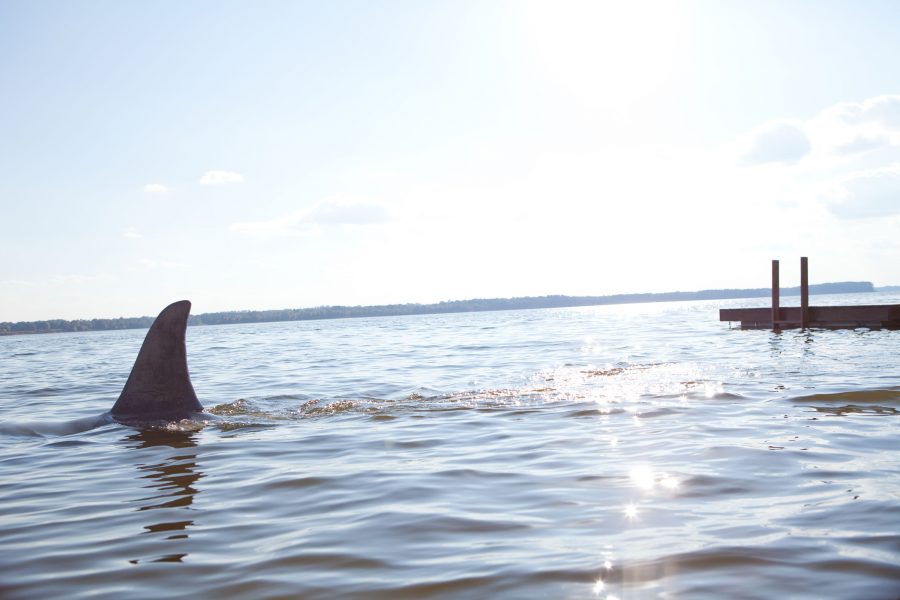Sharks: friend or foe?
While sharks remain treacherous creatures, the ocean is their home.
October 21, 2016
As it often happens when there’s an attack, people instantly panic. On the island of Maui, a female snorkeler was recently bitten in the leg by a shark while diving in waters about 40 feet from shore.
In 2016, there have been 26 attacks in the United States alone and six reported shark attacks in Hawaii, according to the Department of Land and Natural Resources. This excludes shark encounters where someone was not bitten.
In the situation that you do find yourself in an encounter with a shark, there are a few precautions you can take according to National Oceanic and Atmospheric Administration (NOAA) Fisheries:
- Swim (surf, dive, paddle board) with other people and stay within close distance of other people.
- Stay out of the water if you have an open wound or if you are bleeding in any way. Sharks can smell blood from a quarter of a mile away.
- Skip swimming after heavy rains as it can move schools of fish (including sharks) into areas they might not normally be.
- Avoid murky water as your vision can be impaired. If a shark was near, you wouldn’t be able to see it, and the shark wouldn’t be able to sense what you are.
- Don’t go in the water if there are known sharks in the area or if there are posted signs stating there are sharks in the water.
- Avoid wearing shiny jewelry because the reflections it can create look like a fish’s scales.
If a shark does attack, there are two different types of attacks, a provoked and an unprovoked attack. A provoked attack is when the human makes the first advance toward the shark, whether they touch, tease, hook, or net it in an aggressive manner. An unprovoked attack is when the shark makes the first advance toward the human. The shark may do this in three different instances: a hit-and-run attack, sneak attack, or bump-and-bite attack.
A hit-and-run attack is when the shark will bite and then leave. According to NOAA, this is the most common and is usually not fatal. Often times, it’s a case of mistaken identity as the shark isn’t sure what the human is, so the shark is really just taking a bite to find out.
In a sneak attack, the human may sustain multiple deep bites from the shark. This situation is extremely rare and is usually fatal. A sneak attack usually happens in places where the shark is more acclimated to humans, such as places that may try to lure sharks into an area for shark cage diving.
A bump-and-bite attack is when the shark will circle and bump into the human before biting. They do this to try to find out what the human is and whether they are food. Repeated bites are common depending on how that person reacts. If the person were to thrash around, this could make them appear as food to a shark. When there is a lot of movement or splashing in the water, sharks get curious because this is very similar to the movements of other marine animals. This attack can be severe and fatal, but is mostly seen with Great White sharks.
According to the International Wildlife Museum, the odds of someone actually dying from a shark attack are roughly 1 in 3 million. People are more likely to die from a car accident (1 in 84), drowning (roughly 1 in 1,000), and lightning (roughly 1 in 79,000). On the other hand though, over 100 million sharks are killed by humans every year. For every human killed by a shark, 2 million sharks are killed by humans.
There are over 400 different species of sharks. They can range anywhere from eight inches to 40-feet. Sharks are carnivorous and eat fish, other sharks, krill, plankton, and other large animals such as seals and otters.
Sharks have come to be incredibly feared in the media with films such as “Jaws” and “Sharknado,” but they are truly amazing creatures that are important to the ecosystem.
Sharks, as the top predator in the marine ecosystem, feed on other fish which in turn helps maintain the number of fish in coral reefs and seagrass beds. This is important because if the number of fish isn’t maintained, there could be an overpopulation of fish which could lead to overeating of the vegetation in that area. If there continues to be a decrease in sharks, grouper fish will come in to hunt the herbivore fish and with less herbivore fish, macroalgae starts to spread and coral is no longer able to grow. This would be detrimental to not only the marine life but also the reefs and seagrass beds.
While many who fear this creature stay away, there are those who fish for their fins. Shark fins are used in shark fin soup, a popular dish found in asian cuisine which can cost up to $100 or more. When sharks are hunted and caught, their fins are often cut off and their body is thrown back into the water as the shark’s body takes up space and is of no value. The live shark is left to be eaten by other fish or to drown because it cannot move enough to extract enough oxygen.
The demand for shark fins leads to overfishing of sharks, but not all sharks are hunted for just their fins, some also for the meat they provide. Shark finning is leading to the decline in sharks as some are now classified as vulnerable (oceanic whitetip, porbeagle, and the smooth hammerhead sharks) and others are classified endangered (scalloped hammerhead and great hammerhead sharks).
There are the cases that sharks are unintentionally caught which is known as bycatch. Sharks are caught in fishing gear, such as seines nets, trawls, and tuna longlines. Bycatch has been a huge issue within the fishing industry, not just with sharks, but with other ocean animals as well.
Sharks take many years to mature, they grow slowly, and don’t produce many young. These all make a big impact on their population.
While sharks remain terrifying and often times get too close for comfort, sharks help to create an equal balance in our oceans.We often feel sharks are on the hunt for humans, but they are like us, and just trying to survive. The ocean is their home and we are just guests in it.




